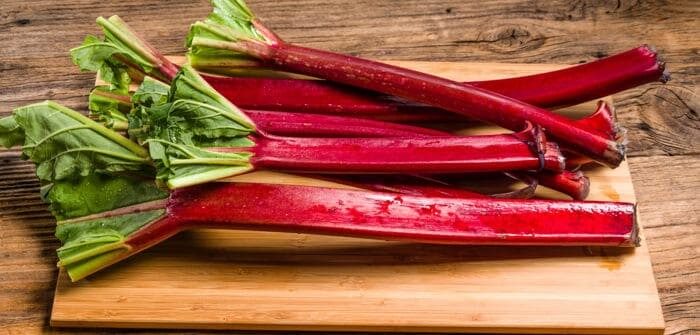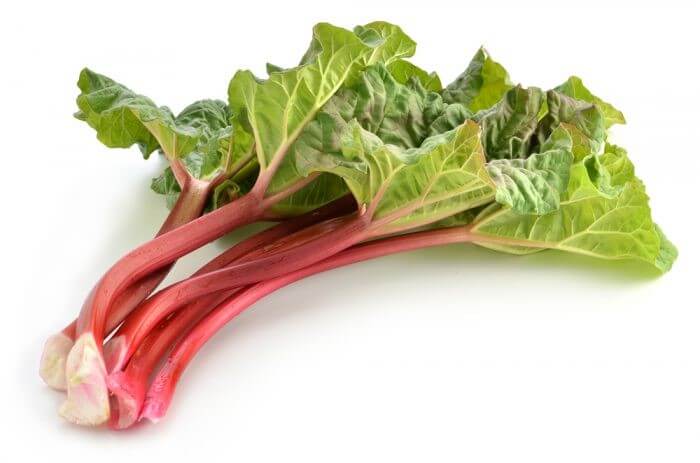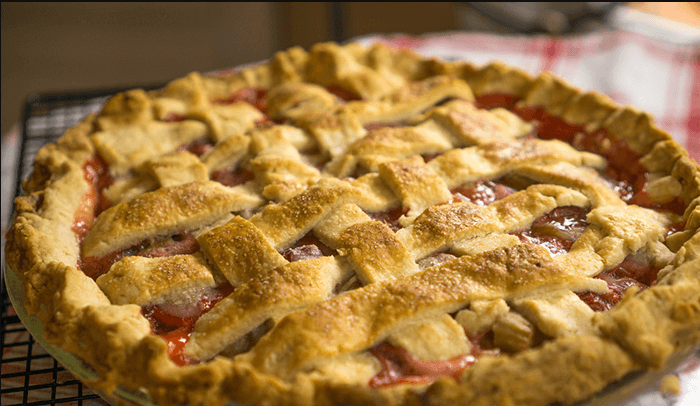
When you hear the word “rhubarb,” it may not ring a bell for many people.
Rhubarb is still not very familiar, but we are seeing more and more of it compared to the past. This is because of its richness in nutrients and its health and beauty benefits.
Let’s take a look at what rhubarb has to offer and what it can do for you.
What is Rhubarb?

It is a perennial herb of the genus Rhododendron. It is a vegetable native to southern Siberia, and is very popular in Europe, including the United Kingdom.
In Japan, it is called shokuyou daiou, but it has not been favored as edible food, and the root was powdered and used in Chinese medicine.
What are the different types of rhubarb?
There are many varieties of rhubarb, including mammoth red and victoria.
However, if you want to use it for food, you should be aware of the different colors.
Rhubarb can be either red, green, or a mixture of both, but when processed, the higher the percentage of red, the more colorful the result.
Also, the reverbs with more green winning out have a stronger aroma and softer flesh than the red ones.
What are the nutritional properties of rhubarb?
Rhubarb is a rich source of nutrients.
The vitamins include carotene, vitamin E, K, B1, B2, B6, C, niacin, folic acid, and pantothenic acid.
The minerals include sodium, potassium, calcium, magnesium, phosphorus, and iron.
Rhubarb is also rich in protein, fat, and carbohydrates, as well as dietary fiber.
What do Rhubarb Taste and Smell Like?
Rhubarb is a vegetable that has yet to be fully adopted in Japan. Many people think it is an unknown vegetable. If your taste buds are accustomed to the vegetables on the table in Japan, you may be surprised when you taste rhubarb for the first time.
Rhubarb tastes quite vinegary
When you think of vegetables, images of bitterness and other textures may come to mind. However, even though rhubarb is a vegetable, it is characterized by its sour taste. Its sourness is so strong that it can be described as “quite” rather than “a little”. The strong acidity can be used to your advantage when cooking with rhubarb, but in its natural state, rhubarb has a very nice acidic taste.
Unique aroma
Rhubarb’s aroma can be summed up in one word: unique. The sourness of rhubarb is enough to make it unorthodox in the category of vegetables, but its aroma is also unique because it has a hint of astringency in its sourness. In other countries, rhubarb is considered to be a palate cleanser after eating fatty meat dishes and is eaten daily.
About Rhubarb Season and Seasons
The best time to eat rhubarb is from May to September. This means that the vegetable is in season from the rainy season to autumn. Rhubarb is native to Siberia, so it is best suited to cold climate environments. In Japan, rhubarb is mainly grown in Nagano Prefecture and Hokkaido, both of which are known for their cold climate. That’s why rhubarb is such a powerful vegetable that goes well with cold regions.
However, the stalks of rhubarb grown in Nagano Prefecture become hard after June, so rhubarb is considered to be in season during the rainy season when it is said to be most delicious. Rhubarb harvested during the rainy season is softer and thicker, which is why it is best to get rhubarb from Nagano Prefecture during the rainy season.
What are the Benefits of Rhubarb?
Since rhubarb is rich in nutrients, many benefits and effects can be expected.
- It can help eliminate toxins and excess water from the body, reduce swelling, and detoxify the body. As a result, constipation can be relieved.
- Strengthens teeth and bones.
- Help reduce sugar and cholesterol levels, preventing and improving lifestyle-related diseases.
- Reduces stress and boosts the body’s immune system.
- Anti-aging is due to its strong antioxidant properties.
- Helps restore eyesight, prevent eye diseases, and relieve eyestrain.
Rhubarb as Chinese Medicine
In Japan, rhubarb is called “shokuyo daioh” (edible daioh) because it is said to be a modified version of the Chinese daioh that was introduced to Japan.
Its Chinese name is Da Huang, and it is treated as one of the major herbal medicines in Japan today, where it is prescribed for constipation and associated abdominal bloating.
Basic Usage and Eating of Rhubarb
Rhubarb is eaten only in the axils with the leaves attached.
Also, rhubarb does not keep its shape when cooked, so it is usually made into jam.
Some recipes call for peeling the rhubarb, but since the skin is also rich in nutrients, it is best to cook the rhubarb without peeling it.
However, rhubarb is rich in nutrients in its skin, so it is best to cook it without removing the skin if possible. As long as the skin is properly removed, there is no problem eating the rhubarb.
How do you remove the astringent from rhubarb?
To remove the acetic acid from rhubarb, simply soak it in water.
It takes about 10 to 30 minutes. If you are concerned about it, you can leave it for an hour before cooking.
Cooking With Rhubarb – Basic Recipe

Rhubarb jam
Wash 400 grams of rhubarb and cut it into pieces of about 1 to 2 centimeters.
Then put it in a stainless steel or enamel pot (or any other pot that is suitable for making jam), add 200 g of sugar, and let it sit for an hour. When the water comes out, turn on the heat, stir to prevent burning, and it will be ready in about 10 minutes.
If you want a sour taste, you can add lemon juice after it is done.
Rhubarb pie
Rhubarb is known as a “pie plant” in Europe.
In Europe, rhubarb is known as a “pie plant,” so it’s no exaggeration to say that rhubarb is always used in making pies and tarts.
Wash and cut 200 grams of rhubarb into 1 to 2 cm pieces, sprinkle 100 grams of sugar over the pieces, and leave them for an hour. When the rhubarb is moistened, heat it in a saucepan for about 10 minutes.
Place the pie crust in a baking pan, pour the custard cream over it, put the cooked rhubarb on top, cover with the pie crust, and bake in the oven at 200 degrees Celsius for about 30 minutes.
Is There Anything I Should Be Careful About When Eating Rhubarb?
Don’t eat the rhubarb leaves!
Rhubarb is a vegetable that is eaten in its axils.
You may be tempted to use the leaves in salads, but rhubarb leaves are not edible because they contain high levels of oxalic acid.
However, rhubarb leaves are not suitable for eating because they contain high levels of oxalic acid, which can combine with calcium in the body and cause stones.
Also, if you have a chronic disease such as gallstones or gout, oxalic acid may aggravate your condition.
Don’t eat rhubarb when you are pregnant
The source of rhubarb, dioica, has the effect of contracting the uterus. For this reason, it is not prescribed to pregnant women even as Chinese medicine. Edible rhubarb should also be avoided during pregnancy.
It is also best not to consume rhubarb while breastfeeding, as the components of rhubarb can cause diarrhea in infants when mixed with breast milk.
Rhubarb is Effective in Maintaining Good Health
Rhubarb is not very familiar to most people, so it may be difficult to incorporate it into your daily cooking.
However, rhubarb has so many medicinal properties that it is also used in Chinese medicine. Especially when you want to improve the condition of your stomach and intestines, or when you are constipated, why not incorporate rhubarb into your cooking to maintain your health through food?